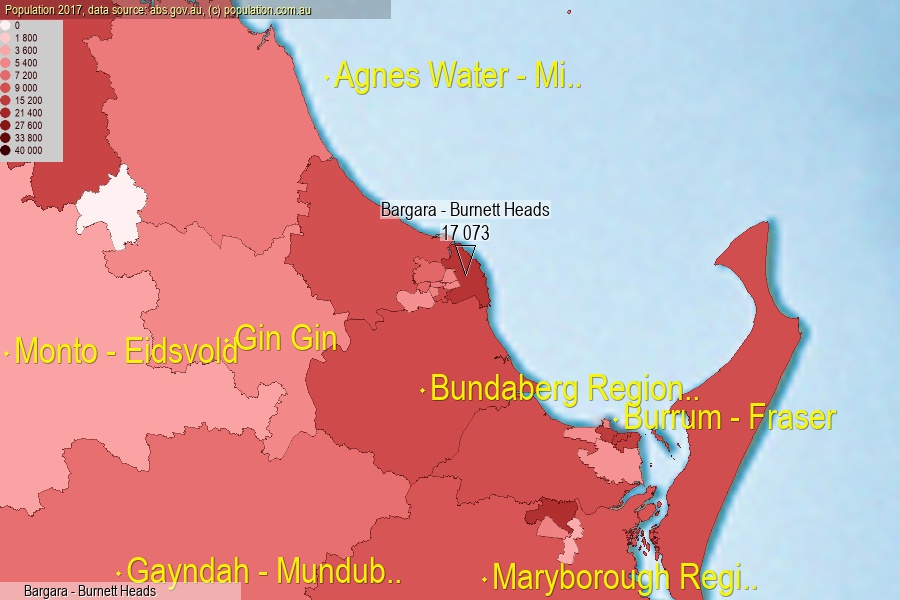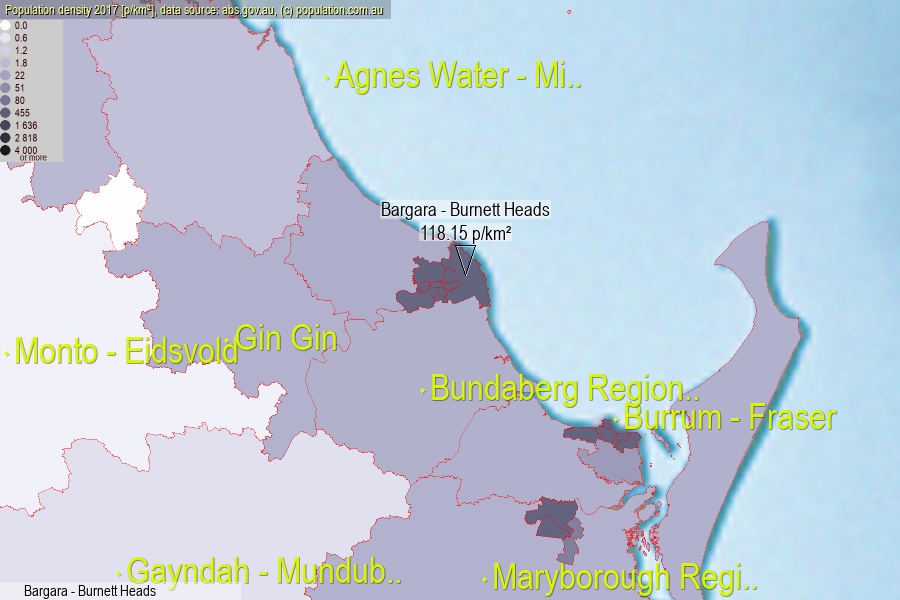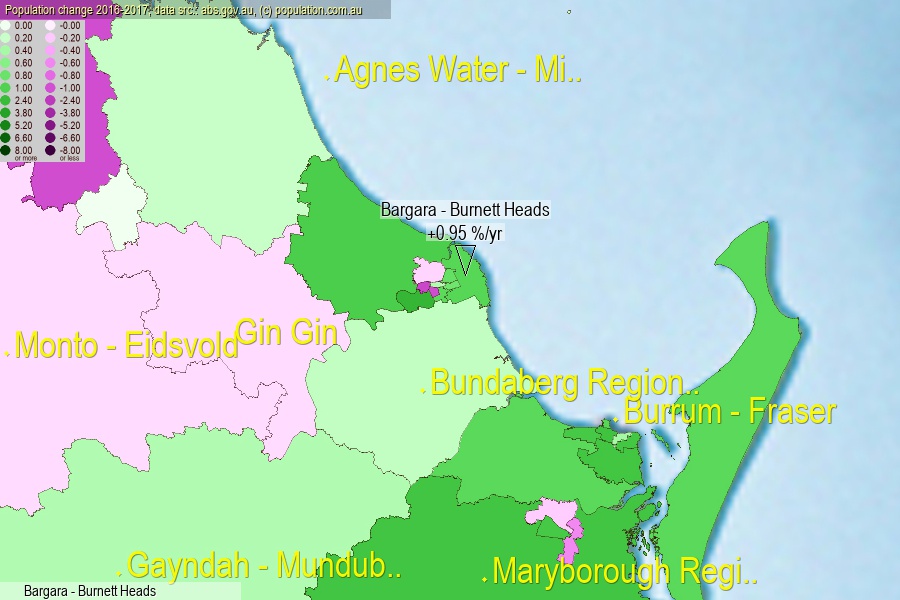 population.com.au
population.com.auLast official estimated population of Bargara - Burnett Heads (as Statistical Area Level 2) was 17 073 people (on 2017-06-30)[2]. This was 0.07% of total Australian population and 0.342% of QLD population. Area of Bargara - Burnett Heads is 144.50 km², in this year population density was 118.15 p/km² . If population growth rate would be same as in period 2016-2017 (+0.95%/yr), Bargara - Burnett Heads population in 2025 would be 18 417. [0]



Click to enlarge. Bargara - Burnett Heads is located in the center of the images.
Population [people], population density [p./km²] and population change [%/year] [2]
View borders » (new window) [4]
[1991-1992] +6.86 %/Yr.
[1992-1993] +8.55 %/Yr.
[1993-1994] +7.73 %/Yr.
[1994-1995] +6.87 %/Yr.
[1995-1996] +4.26 %/Yr.
[1996-1997] +3.17 %/Yr.
[1997-1998] +2.34 %/Yr.
[1998-1999] +2.57 %/Yr.
[1999-2000] +3.26 %/Yr.
[2000-2001] +2.49 %/Yr.
[2001-2002] +2.41 %/Yr.
[2002-2003] +3.99 %/Yr.
[2003-2004] +3.54 %/Yr.
[2004-2005] +4.56 %/Yr.
[2005-2006] +3.70 %/Yr.
[2006-2007] +4.03 %/Yr.
[2007-2008] +5.26 %/Yr.
[2008-2009] +3.29 %/Yr.
[2009-2010] +2.29 %/Yr.
[2010-2011] +1.20 %/Yr.
[2011-2012] +2.92 %/Yr.
[2012-2013] +1.39 %/Yr.
[2013-2014] +0.96 %/Yr.
[2014-2015] +0.83 %/Yr.
[2015-2016] +0.74 %/Yr.
[2016-2017] +0.95 %/Yr.
[0] Calculated with linear interpolation from officially estimated population
[1] Read more about SA2 and Australian Statistical Geography Standard (ASGS) on abs.gov.au
[2] Population data from Australian Bureau of Statistics (Population and density: 2017; change: 2016-2017)
[3] Digital Boundaries: Australian Statistical Geography Standard (ASGS) 2016.
[4] Border coordinates are simplifyed using Ramer-Douglas-Peucker algorithm.